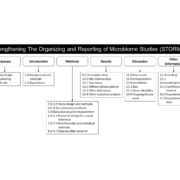Can diet shape the effects of probiotics or prebiotics?
By Prof. Maria Marco PhD, University of California – Davis and Prof. Kevin Whelan PhD, King’s College London
If you take any probiotic or prebiotic product off the shelf and give it to several different people to consume, you might find that each person experiences a different effect. One person may notice a dramatic reduction in gastrointestinal symptoms, for example, while another person may experience no benefit. On one level this is not surprising, since every person is unique. But as scientists, we are interested in finding out exactly what makes a person respond to a given probiotic or prebiotic to help healthcare providers know which products to recommend to which people.
Among factors that might impact someone’s response to a probiotic or prebiotic – such as baseline microbiota, medications, and host genetics – diet emerges as a top candidate. Ample evidence has emerged over the past ten years that diet has direct and important effects on the structure and function of the gut microbiome. Overall the human gut microbiome is shaped by habitual diet (that is, the types of foods consumed habitually over time), but the microbes can also can fluctuate in response to short-term dietary shifts. Different dietary patterns are associated with distinct gut microbiome capabilities. Since probiotics and prebiotics may then interact with gut microbes when consumed, it is plausible that probiotic activity and prebiotic-mediated gut microbiome modulation may be impacted by host diet.
A discussion group convened at ISAPP’s 2022 annual meeting brought together experts from academia and industry to address whether there is evidence to support the impact of diet on the health effects of probiotics and prebiotics. To answer this question, we looked at how many probiotic or prebiotic studies included data on subjects’ diets.
- Prebiotics: Our review of the literature showed that only a handful of prebiotic intervention studies actively measured background diet as a potential confounder of the effect of the prebiotic. One such study (Healey, et al., 2018) classified individuals based on habitual fiber intake, and in doing so found that the gut microbiome of individuals consuming high fiber diets exhibited more changes to microbiome composition than individuals with low fiber intake. While both groups consuming prebiotics showed enrichment of Bifidobacterium, those with high fiber intake uniquely were enriched in numerous other taxa, including butyrate-producing groups of microbes. Prebiotics also resulted in improved feelings of satiety, but only among the high fiber diet consumers.
- Probiotics: We found no evidence of published human RCTs on probiotics that investigated diet as a possible confounding factor. This is a significant gap, since we know from other studies that host diet affects the metabolic and functional activity of probiotic lactobacilli in the digestive tract. Moreover, the food matrix for the probiotic may further shape its effects, via the way in which the probiotic is released in situ.
Our expert group agreed that diet should be included in the development of new human studies on probiotics and prebiotics, as well as other ‘-biotics’ and fermented foods. These data are urgently needed because although diet may be a main factor affecting outcomes of clinical trials for such products, it is currently a “hidden” factor.
We acknowledge there will be challenges in taking diet into account in future trials. For one, should researchers merely record subjects’ habitual dietary intake, or should they provide a prescribed diet for the duration of the trial? The dietary intervention (nutrient, food, or whole diet) must also be clearly defined, and researchers should carefully consider how to measure diet (e.g. using prospective or retrospective methods). In the nutrition field, it is well known that there are challenges and limitations in the ways dietary intake is recorded as well as the selection of dietary exclusion criteria. Hence, it is crucial that dietitians knowledgeable in dietary assessment and microbiome research contribute to the design of such trials.
If more probiotic and prebiotic trials begin to include measures of diet, perhaps we will get closer to understanding the precise factors that shape someone’s response to these products, ultimately allowing people to have more confidence that the product they consume will give them the benefits they expect.






